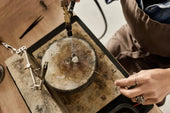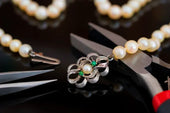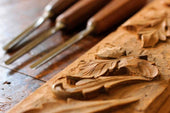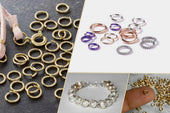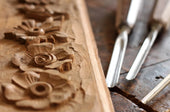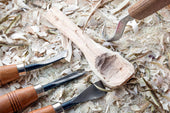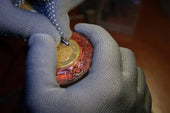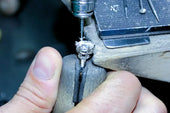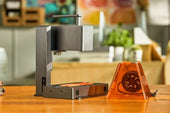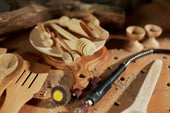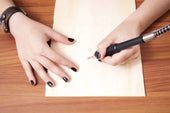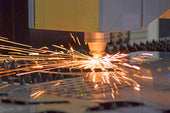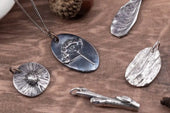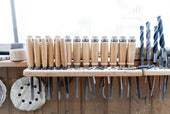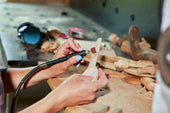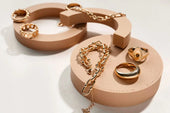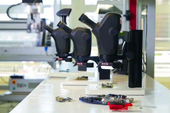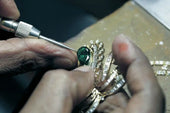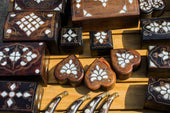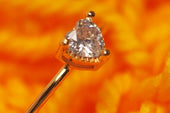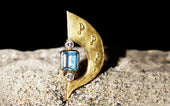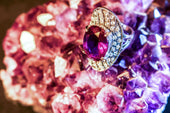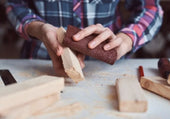Hand engraving is an artistic craft that uses hand engraving tools made from specially hardened and sharpened pieces of steel or a pneumatic engraving machine that can penetrate deep into the surface of a metal material to create a design or picture. Hobbyists who enjoy hand engraving can work with a variety of other materials, including wood, glass, stone, and more, when they learn the most difficult engraving technique of engraving metal. To help engraving enthusiasts learn better, this blog will detail how to engrave beautiful designs on metal.
About metal materials
A wide range of steels and alloys are suitable (however, the hardness level of the metal needs to be taken into consideration), as well as aluminum, titanium, gold, and other non-ferrous or precious metals. This is because hand engraving requires a great deal of skill, patience and attention to detail on the part of the craftsman and gives each item a truly artistic and unique look. It is recommended that engravers choose aluminum and titanium metals, which are neutral in material, for engraving. These metals are more glossy and make it more obvious to see the details that need to be engraved.
Knife engraving process for engraved metals
Tool Use
Many engraving tools are available to help the hand engraver make delicate cuts. Engraving tools (called “carving knives”) are miniature chisels made of hardened steel. These sharp tools are pushed across the surface of the metal at a specific angle and apply the right amount of pressure to create chips and push the curls out of the metal as they are cut.
l Before starting to carve, the carving knife must be properly shaped and sharpened to a specific angle and fitted into a comfortable, controllable handle. The engraving tools used are etching pencils and pens, sandblasting pens, engraving machines, knife engraving knives, beveled engraving knives, oval engraving knives, flat engraving knives, and round engraving knives.
l The pneumatic engraving machines used in the process are precision instruments and they are made of high quality steel, such as highly refined tool steel or high speed steel. Therefore, it is necessary to check that the machine is functioning properly and that the speed is adjusted properly before use.
l Stereomicroscopes and fine engraving knives are used in some small areas. Before using them, you need to check that the eyepieces of the stereo microscope are clear and that the fine engraving knives are sharpened to keep them sharp.
l Finally, remember to wear protective gear, face shield, gloves and goggles. Metal shavings from engraving can easily scratch human skin.
Hand engraving process
Step 1
To carve an exquisite and beautiful pattern on the metal material, first you need to create a sketch of the design according to your idea, and then apply it to the surface of the metal material. Before you start, remember to grind and polish the metal surface.
Step 2
The pattern can either be applied with a fine pencil or the outline of the design can be outlined with a steel pin. Carve the basic outline first to facilitate the next step of fine engraving. Just try metal engraving to learn are flat engraving techniques, so in addition to the pattern outline needs to be engraved, the background also need to be treated with special scoring.
Step 3
Fine engraving requires the engraver to use a fine engraving knife or pneumatic engraving machine to observe the magnified engraving area under a stereo microscope. Then carefully manipulate the tool to carve slowly. Pay attention to control the strength and speed.
Step 4
The most important aspect of metal engraving is the contrast between the shades of the engraved marks. To emphasize the contrast, use a varnish or oxidizer to darken the grooves and a polish to lighten the unengraved areas.
Step 5
Once completed, the surface of the metal material needs to be polished for a better smoothness. Most metal engraved items are hardened to make the metal steel more resistant to corrosion. However, handmade pieces made by engravers on a daily basis are preserved by blackening them with a special paint. This enhances the contrast of the image and protects the metal layer from corrosion.
Main Methods of Hand Engraving
Of the many ways to engrave metal materials, the three main hand engraving methods suitable for the average engraver are hammer and chisel, push engraving and pneumatic engraving.
l Hammer and Chisel: This is the most basic method. The carver holds a hammer in one hand and a chisel in the other and taps gently on the chisel to create an incision in the material.
l Push Carving: In push carving, one hand holds the chisel unit from behind while the other hand is used to feed and rotate the material (usually held in a ball vise) into the chisel.
l Pneumatic Engraving: A pneumatic engraver is a mechanical engraving device with a piston that generates air pressure to force the engraver's tip slightly forward. The method is similar to a hammer and chisel, but the engraver has a second hand free to move the material.
Conclusion
Follow the detailed steps for carving metal materials presented in this guide. Beginners who love carving can also venture into metal carving and carve one-of-a-kind metal crafts.



